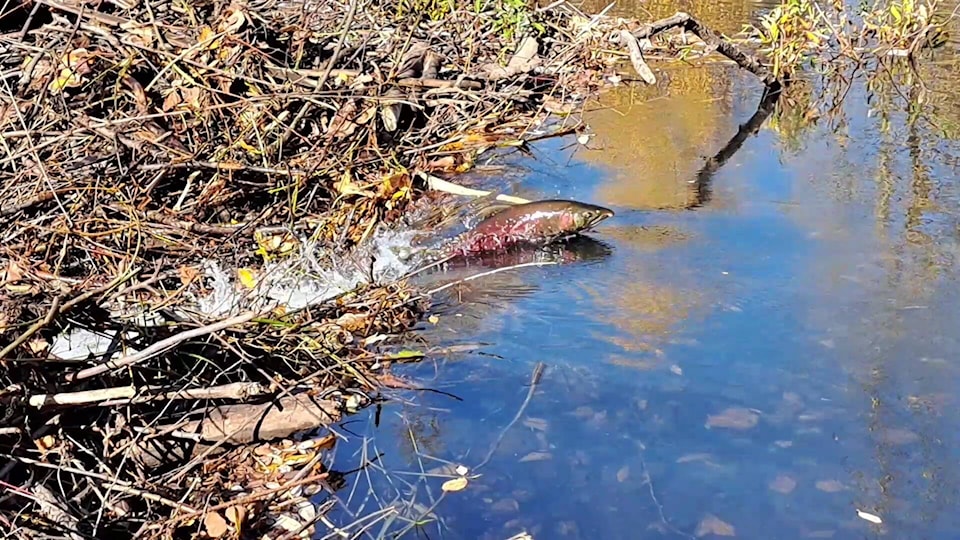Nearly 7,500 coho hatched at the Buck Creek Canfor Hatchery and Nature Centre in Houston over the winter following their collection as eggs from adult coho spawners last October in the Upper Bulkley River.
The collection was even more successful in that hatchery staff and volunteers worked to ensure the adult spawners were able to navigate their way through beaver dams.
“We anticipated that the coho would have a challenging migration up the Upper Bulkley River as the river levels were very low from the drought. We knew of some beaver dams blocking chinook spawners in August, and with very little rain since then the number of beaver dams had likely increased.”
With the concerns about the low returns of salmon spawners to the Upper Bulkley River, we want to ensure they have the best chance to reach their spawning grounds in time.
We then secured funding from the Pacific Salmon Foundation Drought Response Fund, called on our network of amazing volunteers and reached out to our landowner contacts to secure access to the river.
It became clear quite early on that the beavers had been hard at work, as we found the first dam within 1 km of the Morice/UBR confluence and about 100 coho stuck below it.
Without beaver dams the water levels in the river would have been even lower in this drought year. Beaver ponds slowly release water and create perfect rearing pools for juvenile coho salmon. However, when the dam completely spans the river it becomes an impassable barrier to coho spawners migrating upstream.
This year we found 15 such beaver dams within the first 30 km of the UBR. When the fall rains come they bring the river level up so it typically flows around the side of the dam and salmon can swim by. But in the last few years the rains have been coming later, and while coho will wait for a while, eventually they start trying to push through.
You’re probably wondering, what does managing a beaver dam look like? Some people ask “Why don’t you just get rid of the whole dam and then you won’t have to deal with it anymore?”
But this is actually counterproductive. Besides the harassment to the beavers, the juvenile salmon rearing in the beaver pond would be flushed out in the ensuing rush of water, or become stranded and die on the rocks as the river level rapidly drops.
Instead, an effective compromise is to create an opening in the dam about 1 meter wide, removing the major sticks and rocks but leaving the base of the dam intact so we don’t drain too much from the beaver pond. The flow of water and some encouragement from our kicking feet creates a plunge pool at the bottom, giving the fish enough momentum to swim up and through the opening.
The fish respond quickly to the change in water flow and typically within an hour are starting to jump through. The beavers can make quick work of repairing this, typically overnight, and so it was not unusual to return a few days in a row until we’re satisfied the fish have made it through, and then find the next dam the fish are stuck at.
We marvel at the wonder of God’s creation in the remarkable life story of the salmon and are thankful to be a part of stewarding this piece of creation.
Thank you to all the amazing volunteers who came to help us catch fish, notch beaver dams, perform egg takes, count eggs & fertilize them. Thank you to the landowners and business owners all along the Upper Bulkley River who generously grant us access to the river from their property. We were also supported by Department of Fisheries and Oceans staff and the Pacific Salmon Foundation.
The hatchery looks forward to releasing the coho salmon fry at their annual Goodbye Fry community event on Saturday, June 8.
Marjorie Lieuwen serves as Conservation Science Coordinator at A Rocha’s Buck Creek Canfor Hatchery and Nature Centre in Houston, B.C.
